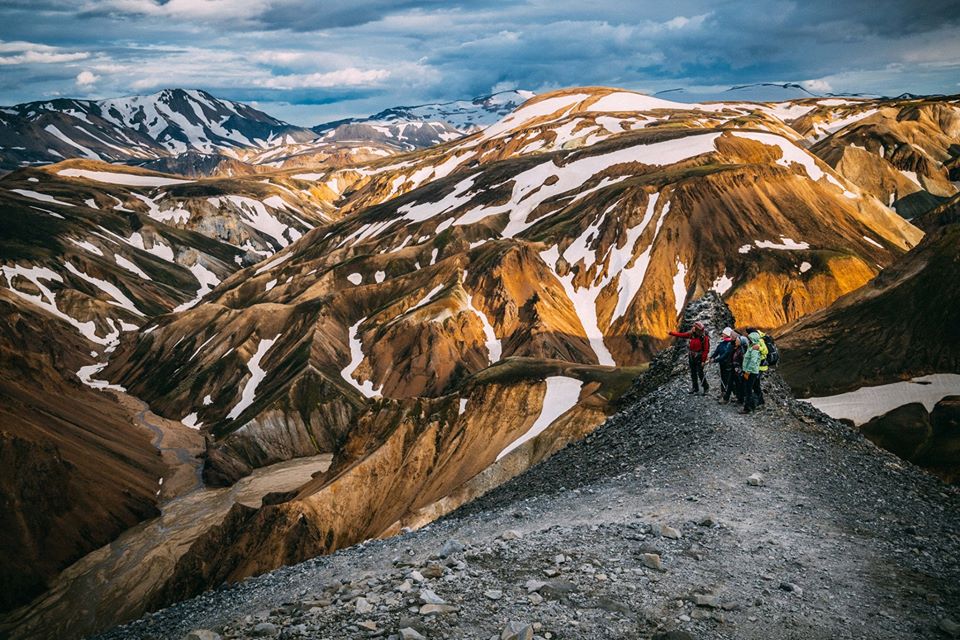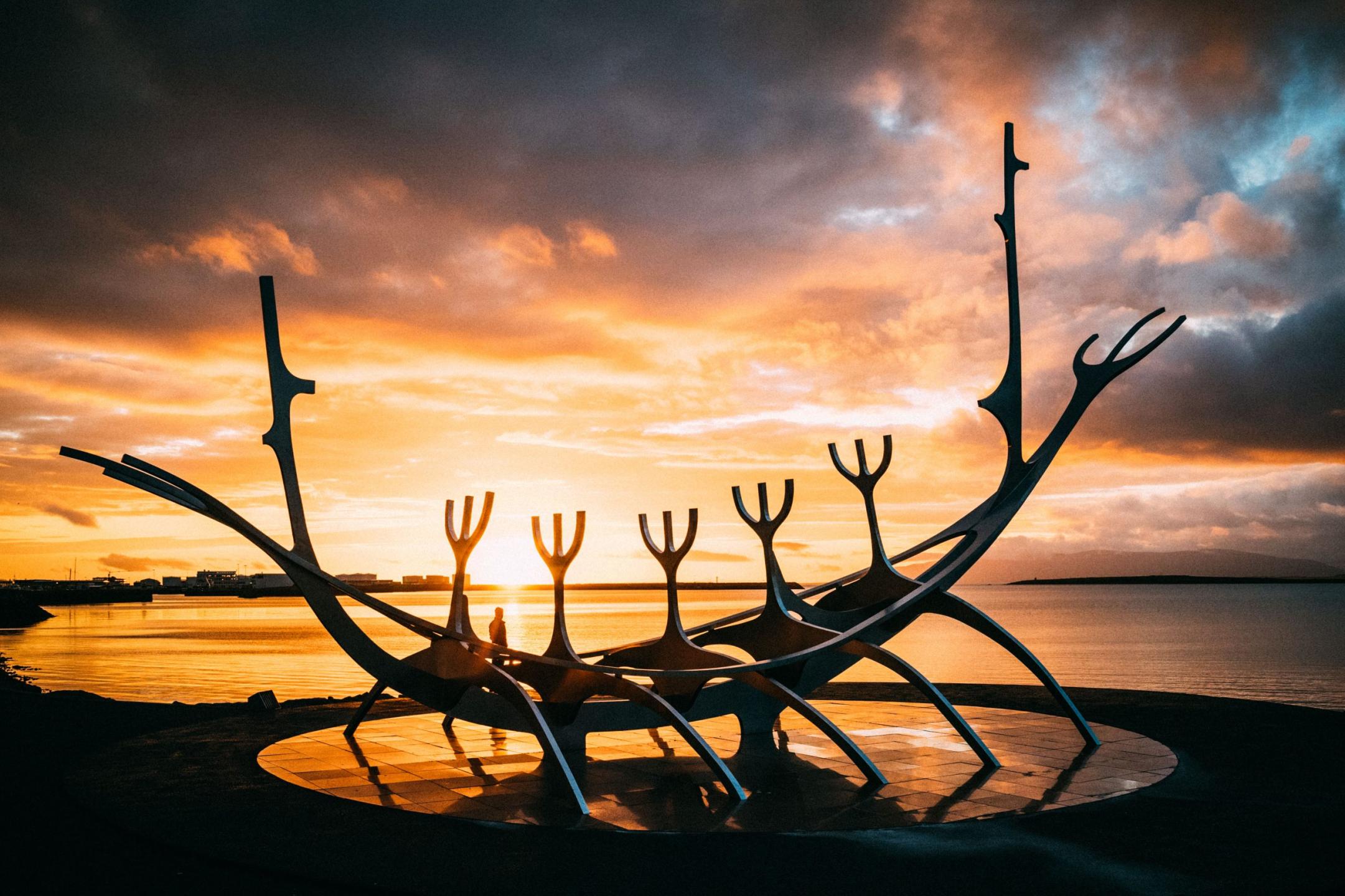Iceland is a paradise for nature lovers and hikers, full of incredible landscapes and wonders of nature that you simply will not find anywhere else in the world. While there are many reasons to embark on different routes in Iceland, the various hiking trails in Iceland are the icing on the cake. In this article we will discover the BEST HIKING TRAILS IN ICELAND.
Ready? Let’s start!
Laugavegur Hiking Trail
The Laugavegur Trail or the Laugavegurinn is undoubtedly one of the most famous treks in Iceland. Nominated by National Geographic as one of the 20 best treks in the world, this trail has reopened since it was closed in the spring of 2010 due to the eruption of the Eyjafjallajökull volcano. In fact, the eruption has shaped the trail, as new volcanic rock has carved out new trails for hikers (such as the Fimmvörðuháls area).
It is a trek in which the recent volcanic destruction is part of the attraction of the route, especially for the new twin craters, Magni and Móði, which were named after the sons of the god Thor.
This almost 55km route runs through some of the most incredible landscapes in the interior of the island, connecting Landmannalaugar with the Thórsmörk valley. A variant of it will bring us closer to the Fimmvörðuháls area in the last two extra stages, from where we can observe the effects of the 2010 eruption.
Do you like it? At Amarok Adventures we do this trekking but with an extension to the most remote places in the highlands. Don’t miss our 12 day trip: Hidden Trails

Ascent to the Sveinstindur peak
Mount Sveinstindur is one of those “hidden gems” of Iceland. Located on Lake Langisjór, in the highlands of Iceland, this area is only accessible during the summer months by 4×4 vehicle. Once we have reached the Sveinstindur refuge, we can begin the ascent to the mountain (1,090 meters over the sea level). Although the trail that begins near the Langisjór refuge is not difficult or long, it is a bit steep.
The trek takes about an hour and a half upwards almost the entire time. When we reach the top, we get an incredible view from where we will see the highest mountain in Iceland, the Hvannadalshnúkur and also the Lakagígar area (the Laki craters); and of course a view that will leave us speechless of the largest lake in Iceland.
This place is visited on our Isolated Iceland trip, a guided adventure through the Highlands of Iceland.

Kristinartindar
Considered by some to be the most incredible “alpine trek” in Iceland that is to say the least, this 7-hour, almost 20km-long trail is only available in the summer months, and boasts views of Iceland’s highest peak: the Hvannadalshnjúkur. It is a circular route, starting from the Visitor Center of P.N. from Skaftafell, passing the Svartifoss waterfall and returning through the viewpoint of the Skaftafellsjökull glacier, also called Sjónarnipa.

Hiking in Hornstrandir
The forgotten peninsula, impassable, wild. This is Hornstrandir, the most uninhabited peninsula in the West Fjords. The Hornstrandir Nature Reserve is a truly special place located at the northern end of the western fjords, practically knocking on the door of the Arctic Circle and transmitting the feeling of being in the middle of nowhere, since the only way to get there is by boat or on foot. There have been no permanent residents on the peninsula since the early 1950s, making it an almost unspoiled place.
Routes of several days will surprise us to make trails of several kilometers, from one fisherman’s hut to the next, under the watchful eye of the Drangajökull glacier and the Jökulbunga peak.
We will immerse ourselves in an odyssey in the middle of a pristine place, where puffins and terns will be our companions, along with the howls of the unmistakable arctic fox on sunny nights of the boreal summer.
Hiking trails in Þórsmörk (Thórsmörk)
The Valley of the God of Thunder (Thor) is one of the most spectacular places for trekking in Iceland, both in summer and winter. Undoubtedly this oasis of birch forests nestled in a dark volcanic valley and flanked by the hanging glaciers descending from the Eyjafjallajökull make this place a unique wonder of Icelandic nature.
Here we can find different trails, depending on the time we have. In Amarok Adventures we recommend:
- Stakkholtsgjá Canyon (2-4 hours): This trail is located on the south side of Krossá and can be accessed on foot, approx. 1 hour each way. On our way, we will enjoy an impressive view over the 100 meter high cliffs, which tower over our heads. The river bed takes us to a narrow passage, in the lower part of the canyon, from where you can enter the Stakkholtsgjá ravine. We will continue until we reach the beautiful and famous waterfall of the canyon.
- Merkurrani Plateau (2-3 hours): This trail takes us up to the foothills of Valahnúkur Mountain and towards the Merkurrani Plateau. From the cliffs we will get an incredible view over the Krossá river, the Eyjafjallajökull volcano and the mountains around Þórsmörk. From there, we can head to the black sands of the Markarfljót riverbed, where the contrasts of volcanic ash and the green hills of Þórsmörk are very evident. On the way back, we recommend a short stop at the Sóttarhellir cave.
In Amarok Adventures we also recommend visiting this place in winter. Would you like to discover it with us?

The East Fjords
Walking through incredible desolate landscapes, without other tourists near you is something that every adventurer wants to feel. It would seem that only in neglected countries like Greenland or Mongolia could we do this. But no! In Iceland it is also possible, but we will have to go off the traditional trails into the colorful eastern mountains and small bays.
From the black sands of the beaches to the pinkish and orange tones of the mountains, alpine landscapes that collide with the proximity of the ocean and the winds that carry the saltpeter. Every day we will follow ancient trails between isolated coves and fjords, over colored hills and green valleys that lead us to the sea and the gentle waves of the North Atlantic.
This area remained populated until the early seventies, and abandoned farms left their mark on the surroundings, however sheep may be the only living being that connects us to those earlier times during our trek in Iceland.





